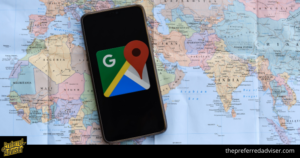If you own a local business or do online marketing for one, you understand that there are different challenges associated with this type of campaign compared to a campaign for a brand that isn’t specific to any particular location.
The SEO landscape is constantly changing, but local SEO is changing even more rapidly. This is likely because the local search results are more sensitive to changes in the algorithm than other types of searches.
Before you start worrying about link building, there’s some preliminary work you need to do on your website. This is especially important if you’re hoping to rank in the local pack listings.
This article provides an overview of local SEO and how it can help improve the visibility of your business online. Local SEO involves optimizing your website and online presence to rank highly for local searches. By doing this, you can attract more local customers and grow your business.
Local SEO
Before discussing the importance of local SEO, it is worth mentioning that it is now a necessary part of any business’s digital marketing campaign. Local SEO allows businesses to promote their products or services to local customers at the precise moment they’re searching for a business like theirs.
The text is saying that people use Google to search for businesses near them.
80% of consumers use search engines like Google and Bing to find information about local businesses.
If you are active online, consumers are likely looking for your business right now on their phone or desktop computer. They will make a purchase based on what they see in the search results.
The vast majority of businesses today have some sort of presence on Google My Business, which includes Search, Maps, and Photos. Google My Business accounts for nearly 80% of all digital ad spending.
This is the case because consumers use this platform more than any other.
If you want customers in your area to find your business, you need to make sure your local page has strong SEO. If your website isn’t appearing in local search results, it will be difficult for potential customers to find you.
Even if you don’t know much about search engines and SEO, there are ways you can improve your local SEO. By creating a strong campaign and executing it well, you can make a difference.
Tips To Rank Your Local SEO in 2022
1. Google My Business
 It’s a good idea to do this as soon as possible, as it helps you control how your business appears on Google Search and Maps If you haven’t already, you should claim your Google My Business page. This will help you control how your business appears on Google Search and Maps.
It’s a good idea to do this as soon as possible, as it helps you control how your business appears on Google Search and Maps If you haven’t already, you should claim your Google My Business page. This will help you control how your business appears on Google Search and Maps.
I won’t go over all the specifics of getting it set up because there are already a lot of articles that explain the process, like this one or this one.
All you need to know is that once you’ve set it up, you should include the following:
- Add a long, unique description that’s formatted correctly and includes links.
- Choose the correct categories for your business.
- Upload as many photos as possible.
- Add a local phone number to your listing.
- Add your business address that’s consistent with that on your website and local directories.
- Upload a high-resolution profile image and cover photo.
- Add your opening times/days (if relevant).
- Get real reviews from customers (I’ll come onto this).
2. NAP (Name, Address, Phone Number)
The most important thing to remember when creating your website is to be consistent with your NAP. This means that every page on your site should include your full name, address, and phone number.
When you mention your address on other websites, it is important to use the same details and format. This will help ensure that your business is accurately represented across the web.
To ensure that your company information is displayed correctly on search engines, you should use Schema.org markup on your NAP.
The image above displays an example of how a local business in London has included their NAP information in the footer of their website. The NAP information has been formatted using Schema.org data markup.
Here’s the code that you can adapt to your own website:
<div itemscope itemtype="http://schema.org/LocalBusiness"> <p itemprop="name">COMPANY NAME</p> <p itemprop="address" itemscope itemtype="http://schema.org/PostalAddress"> <p itemprop="streetAddress">ADDRESS LINE 1</p> <p itemprop="addressLocality">CITY</p>, <p itemprop="addressRegion">REGION</p> <p itemprop="postalCode">POSTCODE/ZIP</p. <p itemprop="telephone">PHONE NUMBER</p> <meta itemprop="latitude" content="LATITUDE" /> <meta itemprop="longitude" content="LONGITUDE" /> </div>
I’ve been using LastPass for a couple of years now, and I absolutely love it. I’ve tried a few other password managers, but I always come back to LastPass. It’s just so simple to use. I’ve been using LastPass for a couple of years now, and I find it really useful. I’ve tried a few other password managers, but I always come back to LastPass.
If you want your business to do well in local search rankings, you should take the time to get local reviews.
This is not limited to only Google reviews. Getting reviews on Yelp (which are used by Apple maps) and other local directories are also important.
Your first priority should be Google reviews though.
To start, you can reach out to your current customers to see if they would be willing to write a review. You can offer them something in return for their time, like a discount.
If you want customers to review your business, create a page on your website that tells them how to do it.
This is an incredibly effective way to reach customers, especially those who are not technical!
There are more in-depth strategies for review acquisition in this article, as well as this one from the Shopify blog.
3. Local On-Page SEO Factors
Some pretty old school SEO tactics are used for on-page SEO for local businesses. The on-page content is given a lot of weight in local search listings, so it’s important to get as much value out of your content as you can.
Again, I’m not going to go into tons of detail on this, because you could just read this, but I’ll break it down into a few important bullet points:
- Try to add your City/Region, plus a relevant keyword, within your landing page title tag.
- Try to add your City/Region, plus a relevant keyword, within your landing page H1 tag.
- Try to add your City/Region, plus a relevant keyword, within your landing page URL.
- Try to add your City/Region, plus a relevant keyword, within your landing page content.
- Try to add your City/Region, plus a relevant keyword, within your landing page image ALT attributes.
- Embed a Google map with your business marker into your landing page.
You have to make sure your website works well on mobile devices, which is especially important now that Google is changing how it ranks mobile search results.
4. Local Link Building And Citations
 Link building is often overlooked as an important aspect of local SEO campaigns.
Link building is often overlooked as an important aspect of local SEO campaigns.
In comparison to a standard SEO campaign, a local SEO campaign relies more heavily on links from other local websites that are related to your business.
It’s more important to get links from websites that are local to you and talking about similar things than it is to get links from high authority websites.
Citations for your business don’t need to be linked, as long as they consistently reference your business NAP in the same way.
You can use a tool like Bright Local to check the consistency of your existing citations and then update them accordingly. You can also use the tool to track your competitor’s citations and add your own to the same websites.
There are a number of ways to get local citations, but here’s a few that I use:
- Use a service like WhiteSpark and get them to find and upload local citations for you.
- Go through the extensive list of citations on the Moz website and manually submit your citations.
- Use a tool like Ahrefs, Majestic or Open Site Explorer to run competitive link research and find citations that your competitors have gained.
- Set up alerts through Mention or Google Alerts to track new mentions of your competitors’ NAP listing.
5. Optimize Your Website For Mobile Devices
If your local business website isn’t accessible on mobile devices, then you’re missing out on a huge potential customer base.
Google states that if a business wants to be successful, its website must be accessible and functioning well on all types of devices. If a website is not optimized for all devices, the business will fall behind its competitors.
Your website should be designed for mobile devices if it is not already. Make time to change this.
To make your site work well on mobile devices, you need to have a responsive design, make sure your site can handle mobile traffic, and optimize all your content for mobile display so it doesn’t look stretched or distorted. In doing so, you’ll also be improving your local SEO.
6. Be Prepared For Voice Search
 Use of voice search is on the rise, especially when looking for local businesses. A recent study showed that 50% of mobile searches are done via voice.
Use of voice search is on the rise, especially when looking for local businesses. A recent study showed that 50% of mobile searches are done via voice.
If you’re not prepared to answer questions and optimize your website for voice search, then you’ll struggle to rank highly. Here’s how you can optimize your website for voice search.
Your website must be designed with mobile devices in mind as most people use voice search through phone assistants such as Siri or Google Assistant.
This means that the website should load quickly, be compatible across all devices, and use text content instead of Flash so that voice assistants can easily read it.
When you are trying to improve your search results ranking, make sure you focus on phrases rather than just keywords. For example, if someone asks Siri to search for “Italian restaurants in NYC,” the best result would be an Italian restaurant located in New York City.
If you only target keywords, you will seem less relevant compared to a NYC-based restaurant.
Ultimately, success with voice search comes down to creating a comprehensive knowledge graph and publishing content that answers common questions in your field. This will not only improve your website’s ranking, but it will also give you an advantage when competing for voice search results.
7. Show Up on Online Business Directories
There are numerous relevant directories you can get your site listed on in order to ensure that potential customers see you. Beyond just the big-name, industry-specific sites like Google Business, Yellow Pages, Yelp, and Merchant Circle, there are many other options to consider.
Look for small, regional directories that are specific to your industry. For example, if you are a florist in the Rocky Mountain region, sign up for directories like Winter Park Flowers and The Flower Finder. You can also check with your local chamber of commerce for listings to add to your site.
8. Encourage Online Reviews
The modern consumer enjoys reading reviews about businesses on sites such as Google My Business, Yelp, TripAdvisor, and others.
In addition, research indicates that consumers are more apt to buy a product if they read positive reviews about it online.
Approximately 95% of customers consult reviews prior to making any purchase, and 8% chance upon local businesses through reviews.
Where reviews are used as a proxy for quality, it is especially important to get good reviews online.
To increase your business’s ranking on Google search results, you need to encourage customers to write Google reviews about your business.
If you want more customers, simply asking your current customers to leave reviews can have a big impact. This is because potential customers see that others are happy to recommend your business, making them more likely to buy from you as well. Furthermore, reviews give potential customers the confidence they need to make a purchase.
9. Optimize For Google Maps
 If you’re a business owner, this means it’s important to have a physical location where customers can come to you. Research indicates that people are more likely to utilize businesses that have a physical location as opposed to those that are only present online. Therefore, if you are a business owner, it is advantageous to have a space where customers can come and visit you.
If you’re a business owner, this means it’s important to have a physical location where customers can come to you. Research indicates that people are more likely to utilize businesses that have a physical location as opposed to those that are only present online. Therefore, if you are a business owner, it is advantageous to have a space where customers can come and visit you.
Even though people mostly use generic keywords when they search on Google, they still do so with a purpose in mind. If they want to visit your store, they’ll use their phone or tablet to find your address and location information on Google Maps.
You can improve your business’ Google ranking by claiming your Google My Business page and adding as many details about your business as possible to your Google business profile.
To optimize your business information for Google Maps, include keywords in the areas of location, hours of operation, phone number, and address. You can also optimize images and videos, although this is optional.
10. Consider Crafting Local Content
Many local businesses struggle with creating content that is relevant to their customers although content marketing is a proven way to grow any business.
In addition, when they do create content, it’s often not very good. This means it doesn’t perform as well as it could.
If you want your local business to do well on Google, you need to create content that is relevant to your customers and produce it with a specific geographic target in mind.
When trying to improve your business locally, you need to think about what your customers are searching for. Consider their needs and figure out how you can help them.
If you want to create content that your customers will enjoy, start by figuring out what kinds of things they would want to know. For example, you could create articles that give recommendations for local businesses, talk about upcoming events, or provide tips for exploring the area. By giving your customers the information they need, you’ll be more likely to keep them engaged with your brand.
Dominate Local Search
over time. To have the best chance at success with local SEO, you need to be thinking about the long term. This means creating strategies that will be effective over time, rather than just providing quick results.

0 comments